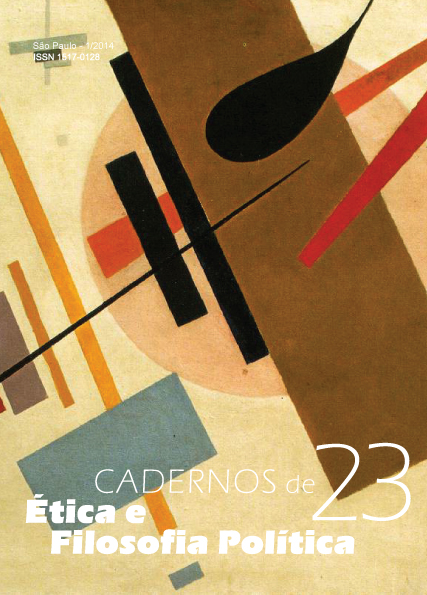Animalização, despolitização e biopolítica sob a influência dos argumentos de Giorgio Agamben
DOI:
https://doi.org/10.11606/issn.1517-0128.v2i23p20-36Palavras-chave:
Giorgio Agamben, animalização, biopolíticaResumo
O ano de 2002 viu o filósofo italiano Giorgio Agamben publicar um livro intitulado L’aperto: l’uomo e l’animale. O presente trabalho tem como proposta lê-lo, indicando as contribuições vindas com a sua insurgência, explorando os diálogos lá iniciados, fixando o seu lugar em face do projeto conhecido genericamente como Homo sacer e relacionando-o com o conceito de biopolítica, tal como concebido por Michel Foucault e herdado por Agamben. Teremos então que atravessar duas partes para chegar ao fim. Na primeira parte, três passos irão compor o cenário de aproximação da obra. O primeiro passo traduz-se da seguinte maneira: nossa cultura é definitivamente marcada pela distinção entre o homem e o animal. O segundo passo consistiria em compreender como, apesar da imperiosa necessidade de produção do humano, a animalização constitui um caminho sem volta da máquina antropológica instalada na nossa cultura. Tendo preparado o terceiro passo, assumindo o parentesco entre o conflito político originário e o conflito entre a humanidade e a animalidade do homem, estaremos em condições de observar como a animalização precede a despolitização e rasga o veio que leva à biopolítica. E será com relação a este conceito que, na segunda parte, se dedicará o texto a contrapor todo o exposto à evolução do pensamento de Foucault. Se o filósofo italiano se define como alguém que escreve depois do filósofo francês e, aqui, abre-se o campo em que a política ocidental pode ser simplesmente visualizada na sua co-originalidade com a biopolítica, será necessário para nós entender esse processo e de que maneira ele influi no nosso modo de pensar a política contemporânea.
Downloads
Downloads
Publicado
Edição
Seção
Licença
Copyright (c) 2013 Daniel Arruda Nascimento

Este trabalho está licenciado sob uma licença Creative Commons Attribution-ShareAlike 4.0 International License.


